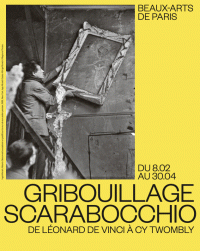FEBRUARY 2 – APRIL 15, 2023
“In the 1970s there was a dialogue and an understanding of what people were doing. And there are still people who are really pissed off at me for changing course and painting a tree!”* - Jake Berthot
Betty Cuningham Gallery is pleased to open, What happen to Abstraction? featuring Jake Berthot’s abstract paintings from the 1970’s alongside of his imaginary landscapes completed the last 20 years of his life.The current exhibition brings together 10 abstract paintings from the 1970’s in conversation with 10 of his late “tree/landscape” paintings dating from 1996 to 2014. What happened?
Jake Berthot held on to two tenets throughout his 45-year career, one was his attachment to the formal geometry of the grid and the other was his intuitive attraction to the poetry of an indeterminate space. He would twist the grid to achieve several vanishing points gaining a place of sensation, or what he would call “a Rothko-like space.” Moving upstate in 1992 a new space enveloped him. His painting was in crisis.
As a start from 1992
- 96 he created a body of monochromatic red, small-scale paintings, some of
which were exhibited at Dartmouth College in 1995, one appropriately titled
‘Grief for that Future’ Rume 1992-94 and another Grief for that Past,
1992-1994. Then, in 1996, surrounded by nature, Jake’s introduced the tree. It seemed
a radical step away from abstraction to representation.
However, Berthot’s commitment to geometry had turned into place. The underlying grid in the late works served to anchor the tree in an indefinite place defined by light and Berthot’s distinct hand. Poetry and structure, it was always abstract.
Jake Berthot was born in Niagara Falls, NY in 1939. He attended the New School for Social
Research and Pratt Institute in the early 1960s. T
he artist held teaching positions at Cooper Union, Yale University, the University of Pennsylvania, and The School of Visual Arts. He received a number of awards and grants, including a Guggenheim Fellowship in 1981, a National Endowment for the Arts Grant in 1983 and an Academy Institute Award from the American Academy of Arts and Letters in 1992.
In 2016, the Phillips Collection in Washington, DC mounted a solo show of the artist’s work, Jake Berthot: From the Collection and Promised Gifts. Berthot’s work can be seen in a host of notable museum collections, including the Museum of Modern Art, The Metropolitan Museum of Art, The Whitney Museum of American Art, and The Solomon R. Guggenheim Museum, all in New York City. Nationally, his work is in the collections of The National Gallery of Art, Washington, DC; Houston Museum of Fine Arts, Houston, TX; The Rose Art Museum, Brandeis University, Waltham, MA; Berkeley Art Museum and Pacific Film Archive, Berkeley, CA; and the Phillips Collection, Washington, DC.
Jake Berthot: What happened to Abstraction? is accompanied by an illustrated catalogue and will remain on view through April 15, 2023.
* Jake Berthot to
Jennifer Samet, Beer with a Painter, Hyperallergic, December 7, 2013
http://www.bettycuninghamgallery.com/exhibitions/what-happened-to-abstraction?view=
Genre : Dessin
Lieu : Palais des Beaux-Arts - Beaux-Arts de Paris, Paris 6e
Date de début : 8 février 2023
Date de fin : 30 avril 2023
Programmation : Du mercredi au dimanche, 13h-19h (jeudi jsq 21h)
Fermetures : Lieu fermé le lundi, le mardi
Site web : www.beauxartsparis.fr
Présentation
Cette exposition est conçue par l’Académie de France à Rome – Villa Médicis et les Beaux-Arts de Paris. Un premier volet a été présenté à Rome de mars à mai 2022. L'exposition dévoile plus de 150 œuvres originales de la Renaissance à l’époque contemporaine. En abordant les multiples facettes du « gribouillage », du croquis barbouillé au revers des tableaux au griffonnage faisant œuvre, le parcours révèle comment ces gestes graphiques transgressifs, expérimentaux, régressifs ou libératoires ont toujours ponctué l’histoire de la création artistique. L'exposition est conçue volontairement en brouillant les classements chronologiques et les catégories traditionnelles.
S'intéresser au gribouillage comme face cachée du travail artistique, invite les visiteurs à déplacer le regard au revers des tableaux, sur les murs de l’atelier, à la marge des dessins. Pour cette occasion, de nombreux prêts ont été accordés par des institutions françaises et italiennes. L'exposition présente en exclusivité des graffiti antiques provenant du Colisée à Rome, deux cahiers de classe d’Eugène Delacroix, de rares dessins de Léonard de Vinci, Raphaël, Michel-Ange, Rembrandt. Sont également exposées plusieurs œuvres emblématiques de Cy Twombly, de Luigi Pericle et des maîtres de la modernité tels que Giacomo Balla.
L'exposition Gribouillage / Scarabocchio est référencée dans notre rubrique Beaux-Arts.
Gribouillage / Scarabocchio : à propos
Cette exposition est conçue par l’Académie de France à Rome – Villa Médicis et les Beaux-Arts de Paris, avec le soutien du Musée national d’art moderne – Centre Pompidou, Paris. Un premier volet a été présenté à Rome de mars à mai 2022.












No hay comentarios:
Publicar un comentario